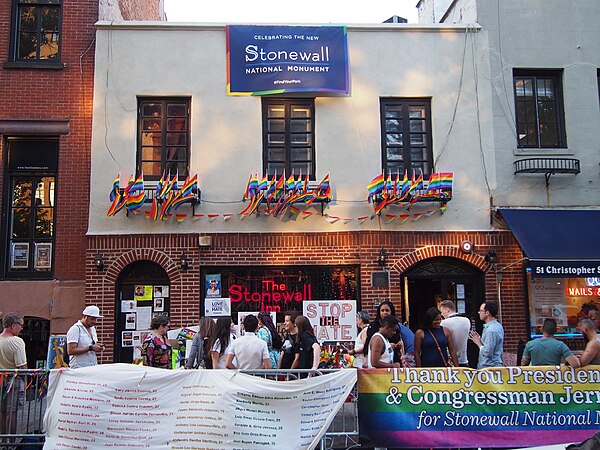Stonewall Inn
A Bar that Changed the World


- The movement for LGBTQ rights in the United States dates at least as far back as the 1920s, when the first documented gay rights organization was founded. Since then, various groups have advocated for LGBTQ rights and the movement accelerated in the wake of the Stonewall Riots of 1969.
- The Stonewall Inn was opened in 1967 by Mafioso Fat Tony Lauria as a “private” gay club. Gay bars often operated as “private” clubs to circumvent the State Liquor Authority policy that prohibited gay people from being served alcoholic beverages.
- The Stonewall was one of the few gay bars in Greenwich Village where patrons could dance. It drew a diverse, young clientele, as well as a small number of lesbians. Some patrons dressed in various forms of drag, and there were also people who wore business attire or jeans and flannel shirts.
- In the early morning hours of June 28, 1969, bar patrons decided to take a stand. What started out as an all-too-routine police raid, led by NYPD Deputy Inspector Seymour Pine, of the Stonewall Inn turned into a multi-night uprising on the streets of Greenwich Village.
- The unusual reaction of the Stonewall's patrons spurred the crowd outside, which came to include a diverse segment of the local LGBT community—homeless LGBT teens, trans women of color, lesbians, drag queens, and gay men as well as other residents of Greenwich Village and visitors. Instead of dispersing, the angry crowd began to fight back as bar patrons were arrested, throwing beer cans and other objects at the police who were forced back into the bar.
- The uprising was a key turning point and a catalyst for explosive growth in a movement that began in the United States in 1950 with the founding of the Mattachine Society in Los Angeles.
- Prior to the Stonewall uprising, the gay rights organizations in the nation's major cities had a modest number of members. In the aftermath of Stonewall and in the years that followed, organizers of new LGBT civil rights organizations across the country and around the world drew hundreds of thousands of activists into the fight for equal rights. By the time of Stonewall, we had fifty to sixty gay groups in the country. A year later, there was at least fifteen hundred. By two years later, to the extent that a count could be made, it was twenty-five hundred. And that was the impact of Stonewall. - Frank Kameny, LGBT rights pioneer, 1994
- Fast forward to 2009 when RuPaul's Drag Race first aired, pioneered by RuPaul Charles, heavily influenced by New York City's ballroom and club scene, who rose to fame after their global hit "Supermodel (You Better Work)" in 1993.
- The phenomenon of RuPaul's Drag Race has now circled the globe with 16 international versions across Europe, North America, South America, Asia, Oceania, and Africa leading to a cultural shift in popularity, acceptance, and opportunity for LGBTQ artists. One can only hope that this newfound place in culture will lead to even more positive change globally.
For more information click here!